In the world of music production, few instruments can match the captivating allure of the modular synthesizer.
This powerful tool can take your beats from basic to legendary, and offers a wide variety of sound-shaping possibilities.
However, mastering a modular synth is no small feat.
The intricate connections, diverse modules, and control voltages involved in a modular system can appear daunting.
But fear not, because in this article, we’re going to break down everything you need to know about this fascinating instrument.
Here’s a quick rundown of what we’ll be covering:
- The basics of modular synthesizers ✓
- The significance of modular synthesis in digital music production ✓
- The transition from traditional to modular systems ✓
- The underlying structure of a modular synthesizer ✓
- The role and variety of Eurorack modules ✓
- An in-depth look at control voltage & signal flow ✓
- The diverse range of sounds achievable with modular synths ✓
- The integration of modular synths with computers ✓
- The influence of modular systems on hip-hop music ✓
- The advantages of semi-modular synthesizers ✓
By the end of this article, you’ll have a comprehensive understanding of modular synthesizers and the transformative impact they can have on your beats.
You’ll be well equipped to navigate the seemingly complex world of modular synthesis and craft unique sounds like a true expert.
So, let’s dive in…
Table of Contents
- What are Modular Synthesizers?
- The Transition from Traditional Synthesizers to Modular Systems
- Understanding the Basic Structure of a Modular Synthesizer
- Exploring the Ins & Outs of Modular Systems
- Synthesis Techniques: Unlocking the Potential of Modular Systems
- The Evolution of the Eurorack Format
- The Integration of Modular Synthesizers & Computers
- Crafting Unique Hip-Hop Beats with Modular Synths
- Going Semi-Modular: A Convenient Alternative
- Modular Synthesizer: Final Thoughts
What are Modular Synthesizers?
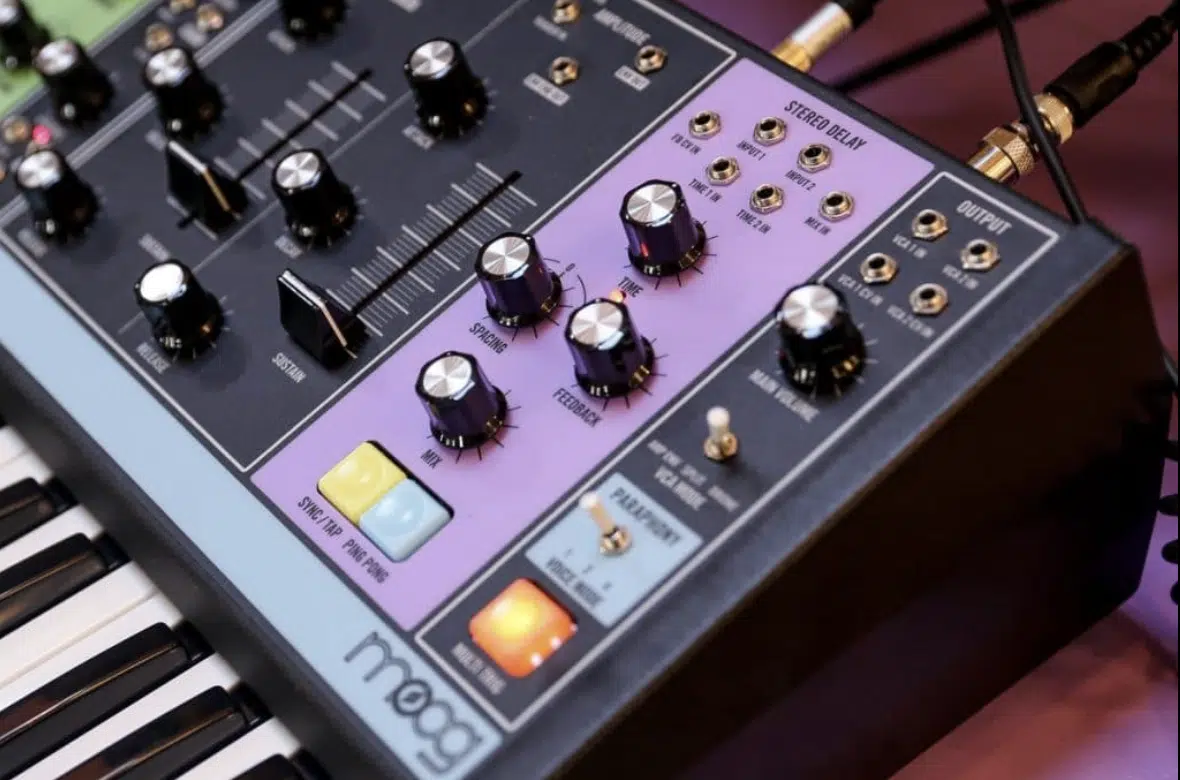
Modular synthesizers, often referred to as modular synths, are electronic musical instruments consisting of different modules that create and shape sound.
These modules can include:
- Oscillators: to produce raw sounds.
- Filters: to modify these sounds.
- Envelopes: to control the shape and duration of the sound.
- Amplifiers: to control the volume.
Unlike traditional synthesizers, which have fixed paths for the signal flow, modular synths offer a flexible patching system.
This means the user can decide the signal’s path by manually connecting different modules using patch cables 一 creating a truly customizable musical instrument with separate modules.
The use of modular synthesizers allows you to have a hands-on approach to sound synthesis and provides a limitless playground for sonic exploration.
They are essentially a blank canvas offering infinite potential for unique sound design, making them an invaluable tool in music production.
The Transition from Traditional Synthesizers to Modular Systems
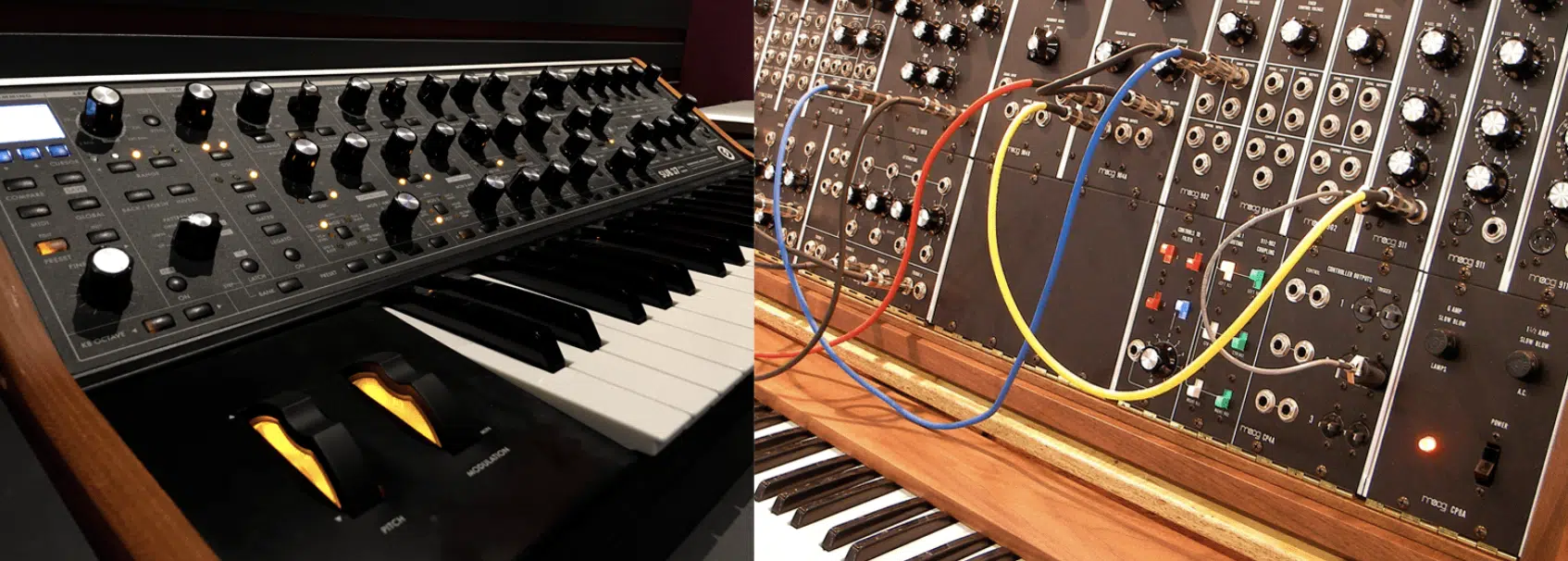
The history of synthesizers is characterized by a steady transition from traditional systems to more flexible modular setups.
Traditional synthesizers (such as the Minimoog and ARP 2600) were monolithic in design, with a predefined, inflexible signal flow that limited sound design possibilities.
Modular systems, with their open architecture, offered much-needed flexibility for sound creation.
They allowed musicians to dictate the signal path, breaking away from the predefined routing of traditional synthesizers.
This transition, although not immediate, was fueled by an evolving musical landscape that demanded greater control and customization over sound design.
Today, modular synthesizers are an integral part of modern music production 一 finding their place in studios, performances, and home studios.
Which, in turn, marked a significant departure from the era of traditional synthesizers.
Understanding the Basic Structure of a Modular Synthesizer
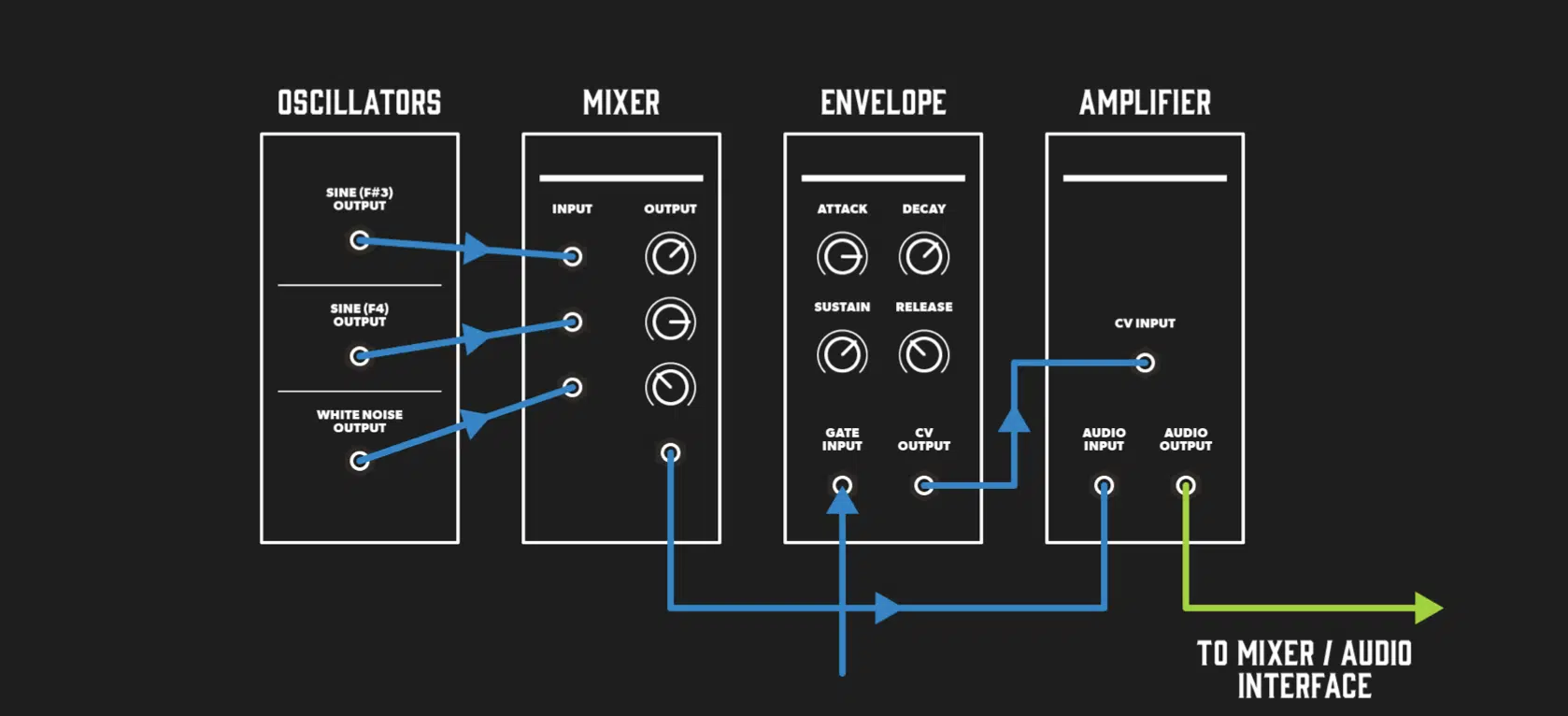
A modular synthesizer, at its core, is composed of individual modules each serving a specific function in the signal path.
These separate modules are typically categorized into:
- Sound sources 一 Like oscillators and noise generators.
- Sound modifiers 一 Like filters and envelopes.
- Modulation sources 一 Like low-frequency oscillators & envelope followers.
Sound sources like oscillators produce raw sound, while sound modifiers like filters and amplifiers shape and alter these sounds to create different tones and timbres.
Modulation sources, on the other hand, provide a means to dynamically control other separate modules and add movement/evolution to the sound.
The routing of these separate modules is achieved using patch cables; creating a signal path that dictates the sound produced.
This patching system is what sets modular synthesizers apart from other synthesizers.
It’s a flexible and customizable way to shape sounds, with no pre-defined paths.
The allure of modular synths lies in their flexibility and the potential for unique sound design, as it contains separate modules.
These separate modules each brings something different to the table, and their combination (new modules) can create complex and evolving sounds.
It’s a great way to constantly discover new ways to generate and shape sounds.
Exploring the Ins & Outs of Modular Systems
Now, let’s dive deeper into the world of modular systems and explore the inner workings of control voltage, signal flow, and the (often overlooked) role of power supplies.
-
The Crucial Role of Control Voltage
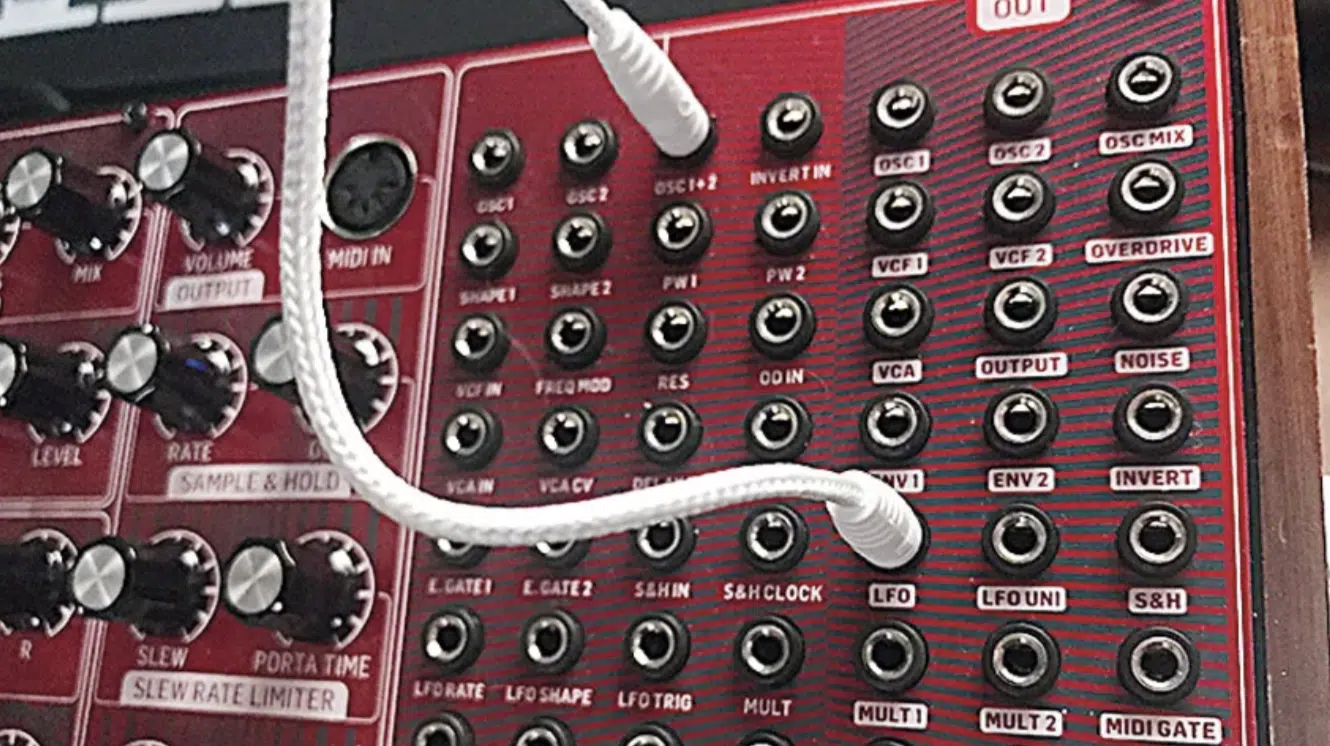
Control Voltage (CV) is a fundamental concept in modular synthesis. It is a way of controlling various parameters of the synth modules using voltage.
The higher the voltage, the higher the value of the parameter it controls.
To name a few, this can be:
- The pitch of an oscillator
- The cutoff frequency of a filter
- The speed of a low-frequency oscillator (LFO)
CV allows for dynamic control of parameters, giving life to static sounds.
For example, you could use an LFO (which produces a low-frequency oscillation) to control the cutoff frequency of a filter 一 resulting in a sound that continually changes in timbre.
Alternatively, you could use an envelope follower (which generates a control voltage based on the amplitude of an incoming audio signal) to control the pitch of an oscillator.
This would create a sound that changes pitch in response to the amplitude of another sound.
In a modular synth setup, control voltage becomes the language through which modules communicate and interact with each other.
By understanding the principles of control voltage, you can start to grasp the endless possibilities of sound design in modular synthesis.
This is because every parameter can be dynamically controlled, automated, and modulated.
-
Signal Flow in Modular Synthesizers
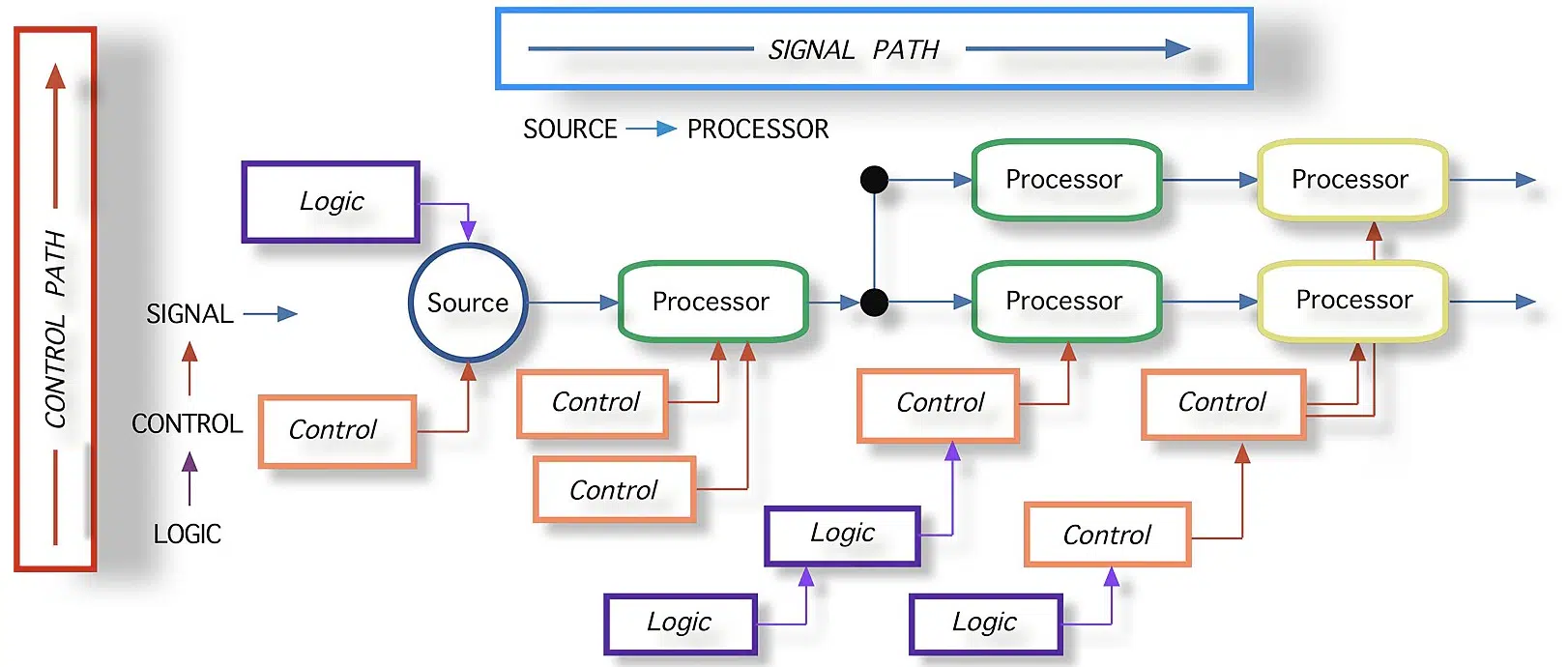
Understanding signal flow is also crucial to mastering modular synthesis.
In a modular synth, the signal flow is determined by how you patch (connect) the modules together with cables.
The signal:
- Originates from a sound source, such as an oscillator.
- Travels through various sound shaping and modifying modules before reaching the output.
One of the unique aspects of modular synths is the flexibility they offer in terms of signal routing.
Unlike fixed architecture synths where the signal path is pre-determined, modular synths allow you to create your own signal paths.
This means you can experiment with different module configurations and signal routes to achieve a vast array of sounds.
This flexibility, however, also introduces complexity…
It requires a fundamental understanding of how different modules function and interact.
By experimenting with different patching strategies and module combinations, you can discover new sound design possibilities.
As well as develop a deep understanding of signal flow in synthesis.
-
Power Supplies
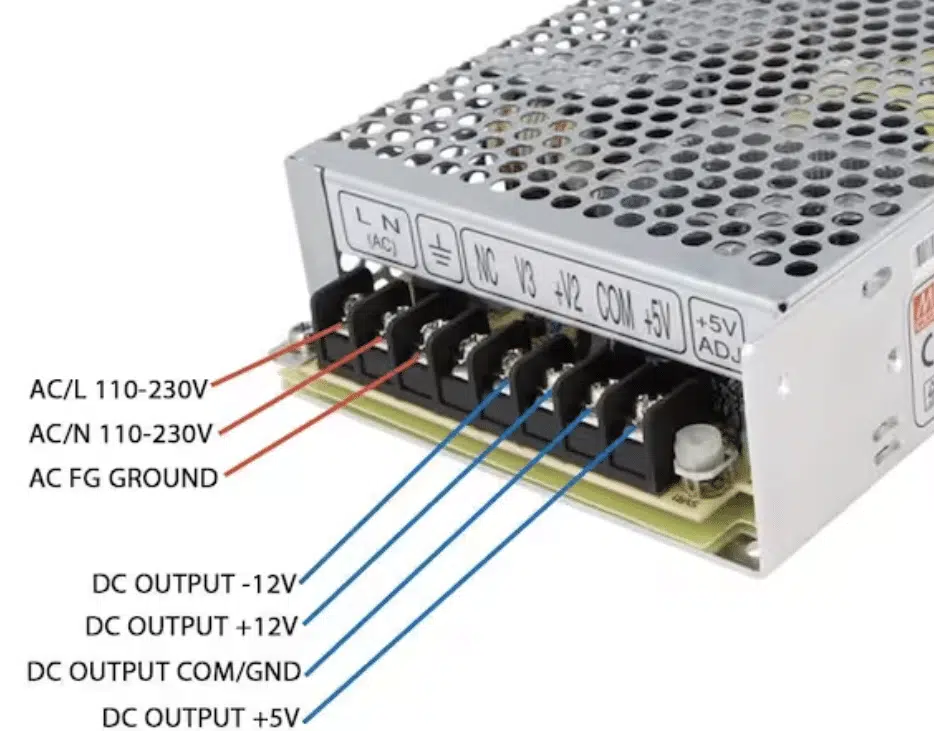
Power supplies, though often overlooked, play a critical role in the world of modular synthesizers (and modular synthesis in general).
They provide the necessary power to run each module in your setup.
Without a reliable power supply, a modular synth system simply wouldn’t function at all.
In the Eurorack standard, power supplies typically provide three voltages:
- +12V
- -12V
- +5V
These voltages are required by different modules to perform their various functions.
It’s crucial to ensure that your power supply can provide enough current for all the modules in your system.
If the power supply is inadequate, it can lead to problems such as modules not working correctly or even damaging your modules.
Aside from providing power, some power supplies also offer additional features like short circuit protection and low noise design.
- Short circuit protection 一 Saves your modules from damage in case of a patching error.
- A low noise design 一 Ensures that the power supply doesn’t introduce unwanted noise into your signal path.
Therefore, investing in a good power supply is essential for the optimal functioning of your modular synthesizer system.
Synthesis Techniques: Unlocking the Potential of Modular Systems
With a basic understanding of modular systems, we can now explore the range of synthesis techniques that can be used to unlock their full potential.
-
Exploring the Range of Sounds in a Modular Synthesizer
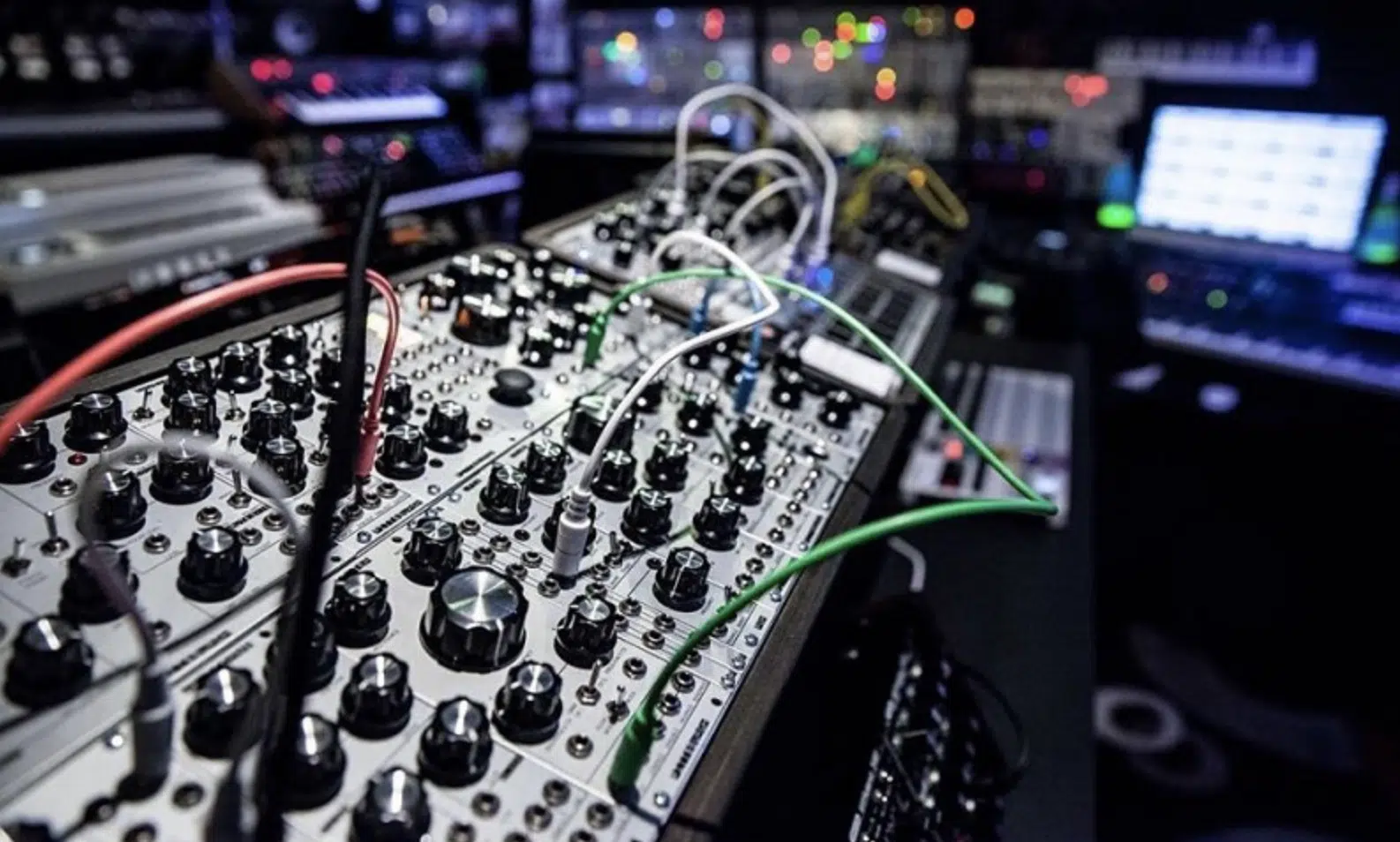
A modular synthesizer is a sonic playground offering a broad palette of sounds.
From simple sine waves to complex evolving soundscapes, the range of sounds that can be produced is virtually limitless.
This versatility stems from the flexible architecture of modular systems, where multiple modules can be interconnected in a variety of ways.
At the most basic level, a modular synth can generate simple waveforms using oscillators, like:
- Sine
- Square
- Sawtooth
These raw sounds can then be shaped and modified using filters, amplifiers, and other modules to create a wide array of tones.
Adding modulation sources like LFOs or envelopes allows for dynamic control of these sounds.
Which, of course, adds movement and evolution.
As you delve deeper into the world of modular synthesis, you’ll discover a universe of sonic possibilities.
Complex modules like granular synthesizers and physical modeling modules can create intricate sounds that emulate real-world instruments or generate otherworldly soundscapes.
By combining these modules and experimenting with different patching strategies, you can uncover a unique range of sounds that cannot be replicated by traditional synthesizers.
-
Crafting Unique Sounds with Eurorack Modules & Patch Cables
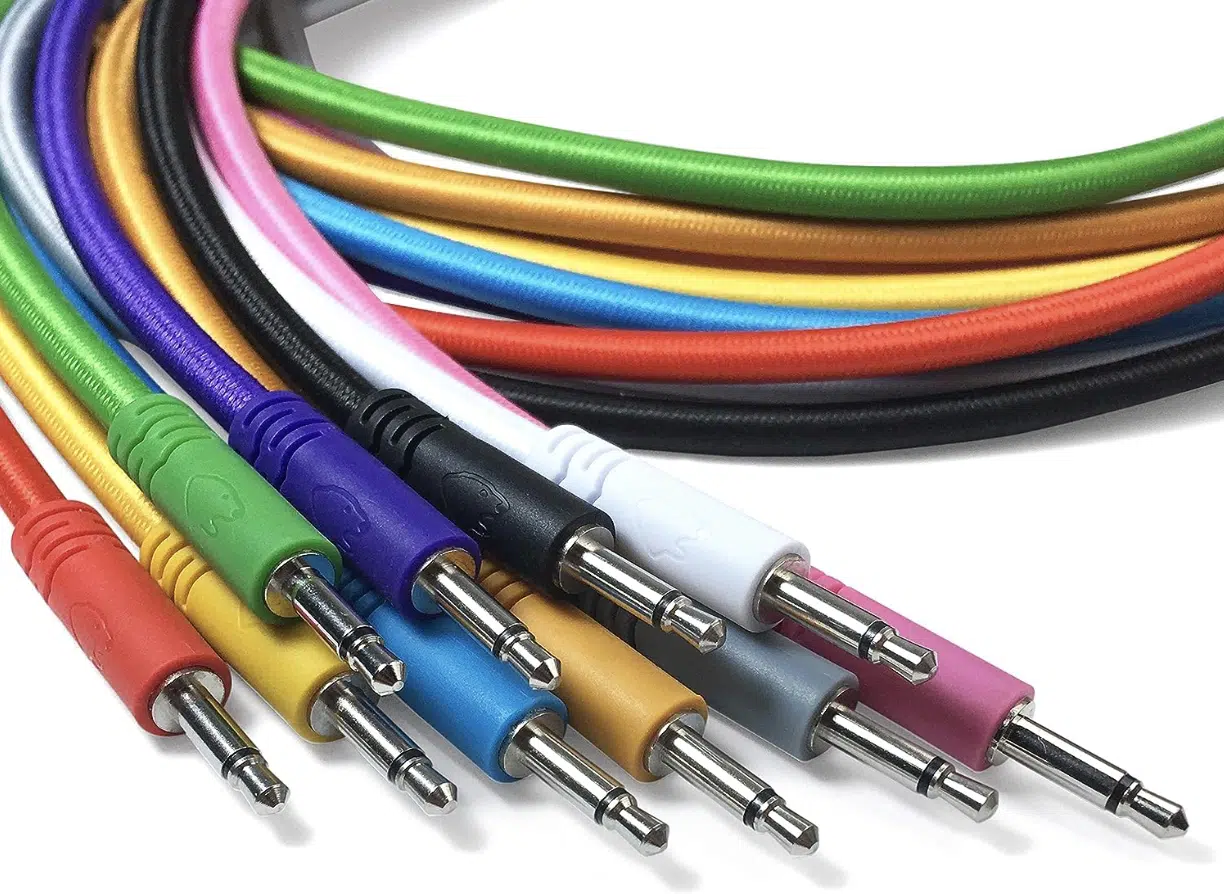
The true potential of a modular synthesizer is realized when patch cables are introduced.
Patch cables enable the interconnection of modules 一 establishing the signal flow and determining how the sound is generated and shaped.
With the right patching strategies, you can craft a unique sonic identity with your modular synth.
A patch can start simple: an oscillator connected to a filter, then to an amplifier, which creates a basic subtractive synthesis voice.
But with a modular synth, you can take this basic patch and expand on it in countless ways…
For instance, you could add a sequencer to control the pitch of the oscillator, creating a melodic sequence; whether it’s pop music, hip-hop, or any other popular formats.
Or add an LFO to modulate the filter cutoff, introducing rhythmic variation to the sound.
You could also use multiple oscillators 一 detuning them slightly for a thicker, richer sound.
The possibilities are virtually endless.
As you experiment with different patching strategies, you’ll start to uncover the real depth of modular synthesis.
By using modules in unconventional ways, you can generate unexpected and interesting sounds.
For instance, an LFO, typically used for modulation, can be pushed to audio rates to act as an additional oscillator.
Similarly, a filter can be pushed into self-oscillation to generate its own tone, which can be used as a sound source.
Patch cables also allow for feedback paths, where the output of a module is routed back into its input or the input of another module.
This can result in complex, evolving sounds as the signal continually interacts with itself.
Each patch you create on a modular synthesizer can be thought of as a unique instrument, tailored to your specific needs.
-
The Power of Filters & Sequencers
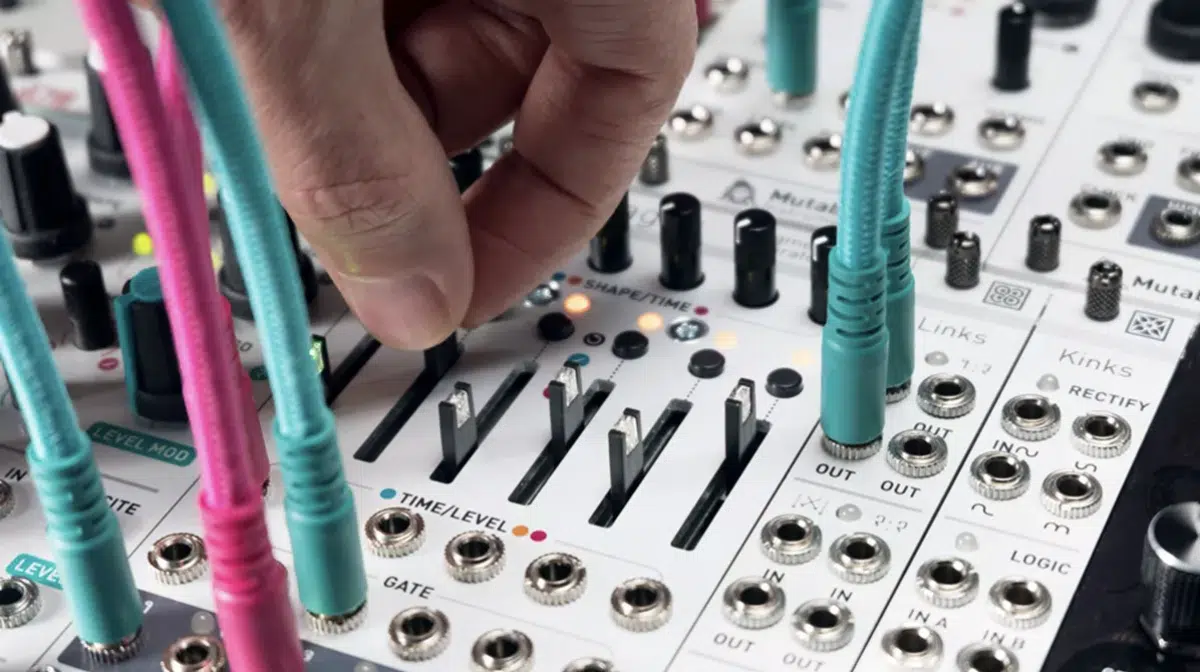
Filters and sequencers are two key types of modules that play a major role in sound synthesis.
- Filters 一 Shape the timbral qualities of a sound by selectively cutting or boosting certain frequencies.
- Sequencers 一 Generate control voltages in a predetermined sequence, often used to create melodic and rhythmic patterns.
Filters are one of the main sound-shaping tools in a modular synth.
A filter can dramatically change the character of a sound, turning a bright, harsh tone into a smooth, mellow one or vice versa.
Filters come in different types (low-pass, high-pass, band-pass, etc.) and can also be modulated by control voltages, which adds movement/dynamism to the sound.
Some filters can even be pushed into self-oscillation, acting as an additional sound source.
Sequencers, on the other hand, add the element of time and intriguing rhythm to a modular system.
They output a series of voltages in sequence, which can be used to control various parameters such as pitch, filter cutoff, or amplitude.
Sequencers can be as simple as a basic step sequencer with a set number of steps, or more complex ones offering features like:
- Randomization
- Ratcheting
- Variable sequence length
By modulating and sequencing parameters, you can create dynamic, evolving musical patterns.
This pushes the boundaries of traditional music production.
The Evolution of the Eurorack Format
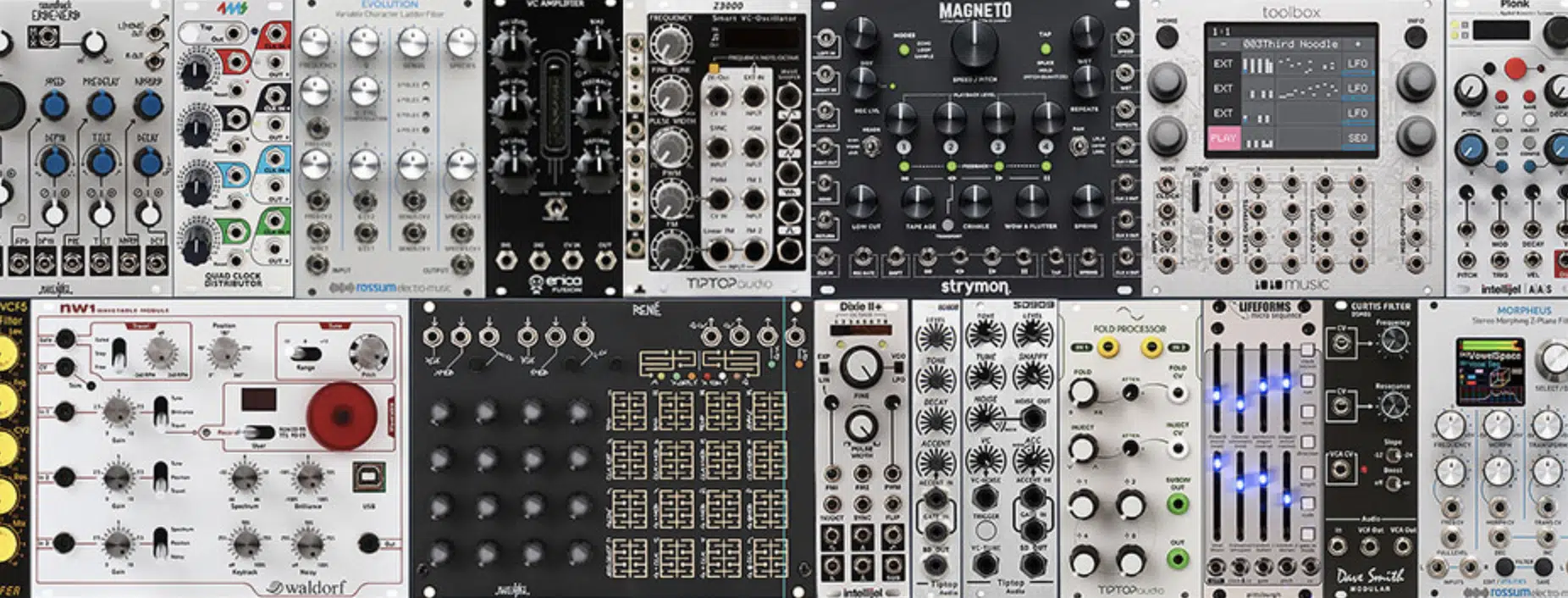
Eurorack has become the dominant format in the modular synth world since its introduction by Doepfer Musikelektronik in 1995.
Named after the standard 19″ rack width used in telecommunications, Eurorack offers a smaller, more compact alternative to the earlier, larger formats (such as Moog 5U standard).
The Eurorack format was slow to gain traction initially.
However, it eventually caught the attention of electronic musicians looking for a more affordable and portable option.
The device format exploded in popularity during the 2010s, which lead to an influx of manufacturers developing new and innovative modules.
Today, the Eurorack system boasts an incredibly diverse range of modules 一 from basic oscillators and filters to complex digital processing units and experimental sound sources.
A Eurorack system brings the tactile experience back into music production, which is often lost in the digital realm.
Twisting knobs, plugging in patch cables, and interacting with hardware can lead to happy accidents and creative discoveries that wouldn’t occur when clicking with a mouse in a DAW.
The unlimited possibilities for signal routing and sound manipulation in a modular system make Eurorack an attractive tool for producers seeking unique/complex sounds.
In the digital age, the Eurorack format has proven that there is still a significant demand for hands-on, hardware-based music production.
-
The Brilliance of Moog & its Contribution to the Eurorack Modules
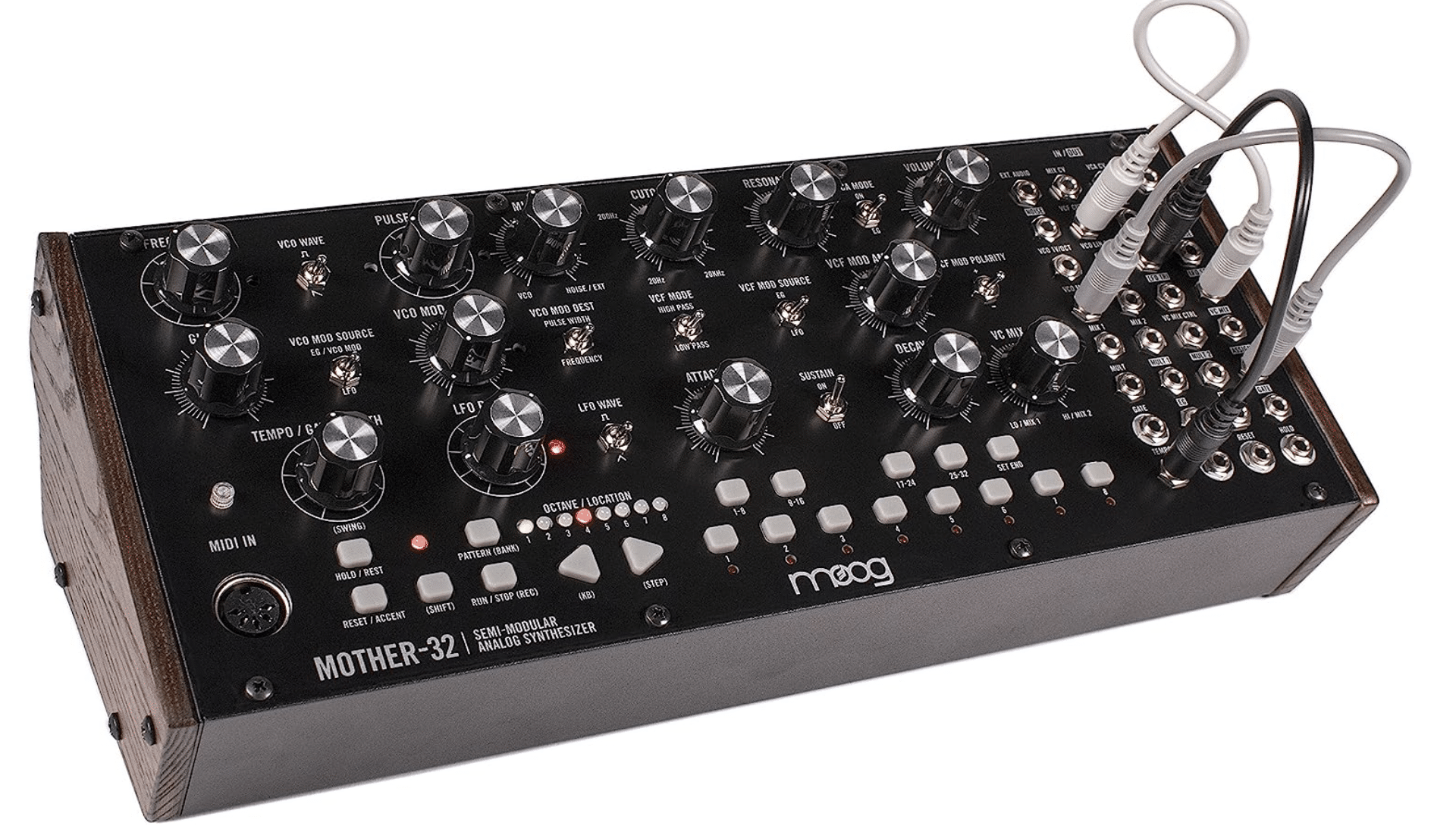
While Moog is often associated with the larger 5U modular systems, it has also made significant contributions to the Eurorack format.
Moog Mother-32, for instance, is a semi-modular synth in the Eurorack format that has been widely praised for its rich, vintage Moog sound.
As well as its comprehensive and impressive patching capabilities.
Moog’s Eurorack offerings also include:
- The DFAM (Drummer From Another Mother) 一 A percussive analog synth.
- The Subharmonicon 一 A semi-modular polyrhythmic synth.
These modules showcase Moog’s commitment to high-quality analog sound in a compact, patchable format.
Moog’s contributions to the Eurorack world go beyond their individual modules…
The company’s reputation and influence have helped legitimize and popularize the format and synthesis technology in general.
Which attracted new users and inspired other manufacturers to develop their own Eurorack modules.
-
Erica Synths
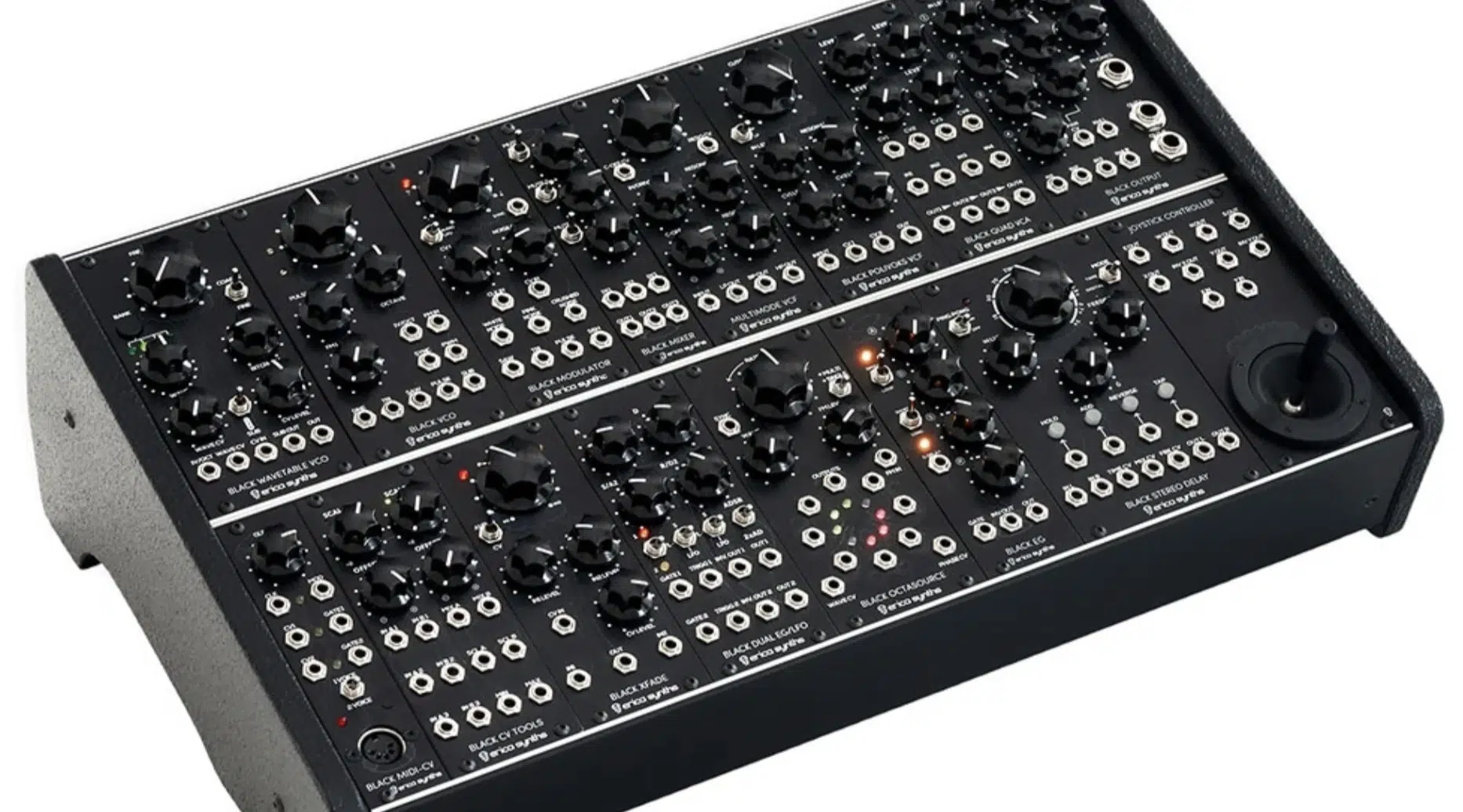
Another significant player in the Eurorack scene is Erica Synths, a manufacturer based in Latvia.
Known for their distinctive black and white aesthetic and their innovative designs, Erica Synths offers a wide range of modules; from traditional analog circuits to unique digital devices.
Some of Erica Synths’ standout modules include:
- The Black Wavetable VCO 一 Offers a range of complex waveforms for sonic exploration.
- The Pico DSP 一 A compact effects module with a variety of stereo processing effects.
- The Black System II 一 Provides a comprehensive set of modules for a broad spectrum of sounds.
Erica Synths has a commitment to quality and innovation that is evident in their products.
Their modules offer unique features and sounds that push the boundaries of what’s possible in the Eurorack format.
The Integration of Modular Synthesizers & Computers
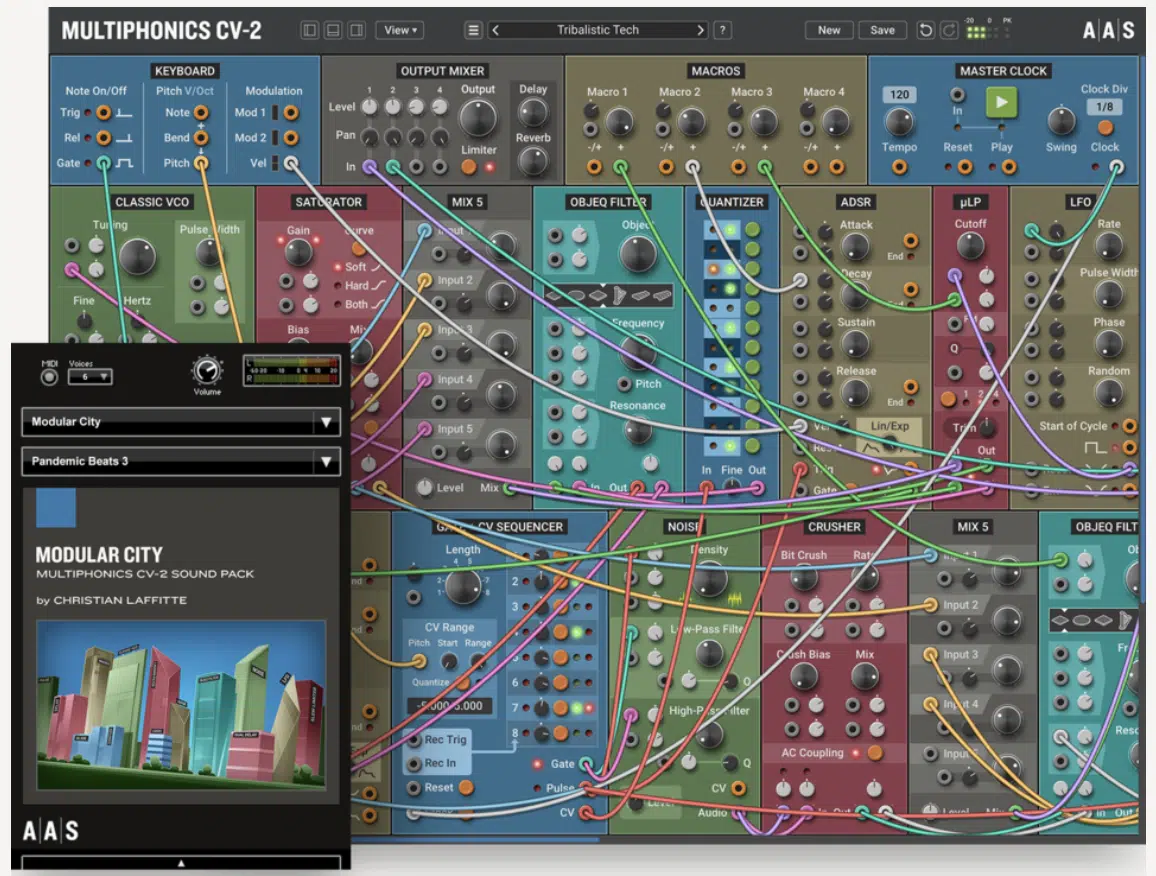
Above: Modular City & Multiphonics CV-2 by AAS
The integration of modular synthesizers and computers has revolutionized the field of sound synthesis.
This has not only opened up new possibilities for sound manipulation but also made modular synthesis more accessible to a broader audience.
The use of software (like Ableton Live, Max MSP, and Reaktor) allows you to interface your modular synth with your computer.
These softwares enable you to:
- Sequence your modular with MIDI
- Process your modular’s sound with software effects
- Use your computer’s CPU as a digital module in your modular system
Another significant development in this area is the rise of virtual modular synthesizers, like VCV Rack and Softube Modular.
These software applications emulate the modular synthesis experience in the digital domain 一 allowing you to patch virtual cables and experiment with virtual modules.
They can be a cost-effective way to explore modular synthesis.
And, even integrate with physical Eurorack systems via control voltage interfaces.
Crafting Unique Hip-Hop Beats with Modular Synths
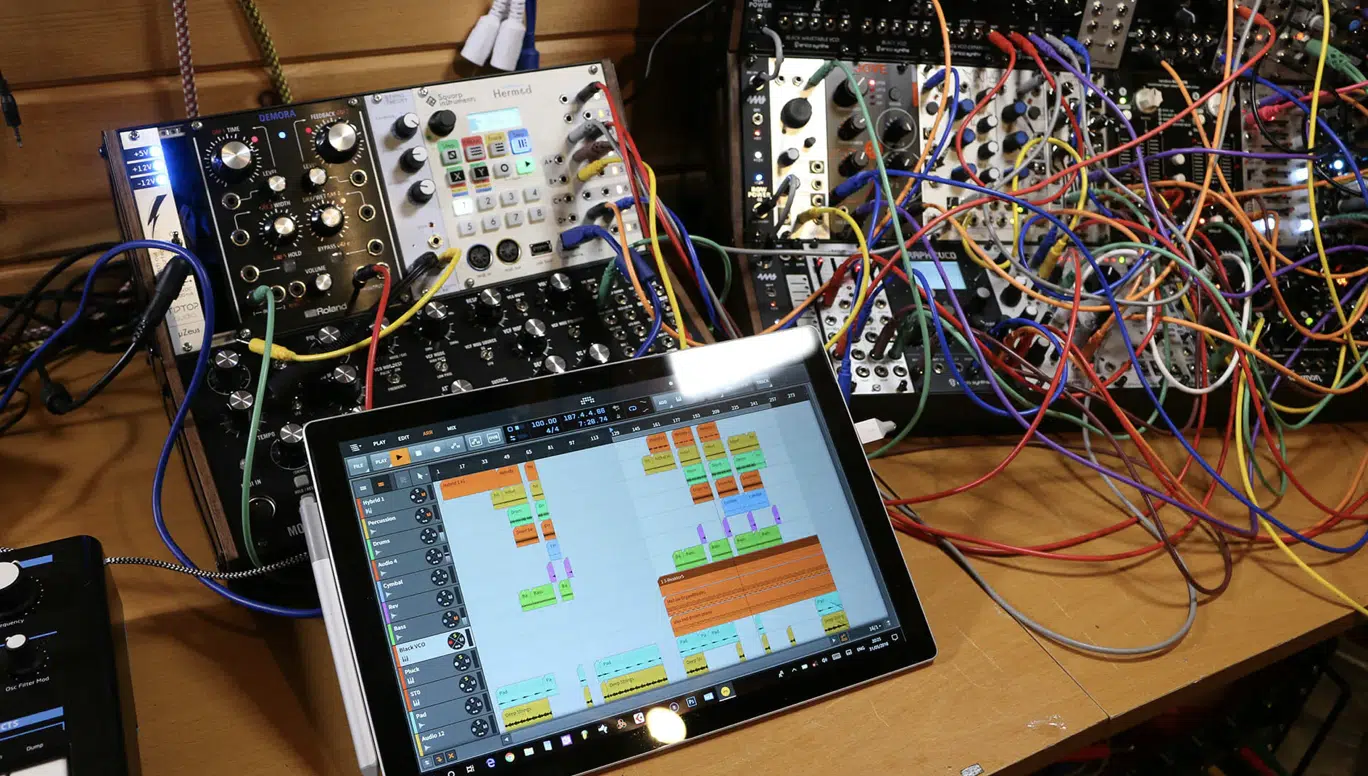
Creating hip-hop beats with modular synthesizers may seem daunting at first, but it offers a world of sonic possibilities.
With a modular synth, you can design each sound from the ground up, giving you total control over your beat’s timbre, pitch, and rhythm.
Start by building a basic drum kit using your modules:
- Oscillators 一 Can generate kicks and toms.
- Noise generators 一 Can create snares and hi-hats.
- Low-pass gates 一 Can mimic the natural decay of percussive sounds.
By patching these elements together in creative ways, you can craft unique drum sounds that won’t be found in any sample pack.
Melodic elements in hip-hop beats can also benefit from the sonic versatility of modular synthesizers.
Sequencers can drive oscillators to create catchy basslines and melodies.
With a bit of patching, you can add complex modulations to these elements, making your tracks more dynamic and interesting.
Beyond the basic beat elements, modular synthesizers excel at creating the atmospheric and textural sounds that can give a track its unique vibe.
Experimental modules can be used to:
- Generate ambient pads, strange sound effects, or lo-fi textures.
- Add depth and character to your beats.
By integrating a modular synth into your beat-making process, you can take your hip-hop tracks to new sonic territories.
Going Semi-Modular: A Convenient Alternative
While modular synthesizers offer unlimited potential for customization, their complexity and cost can be overwhelming for some.
Enter: semi-modular synthesizers.
They strike a balance between versatility and accessibility, making them a popular choice for many music producers.
-
The Appeal of Semi-Modular Synthesizers
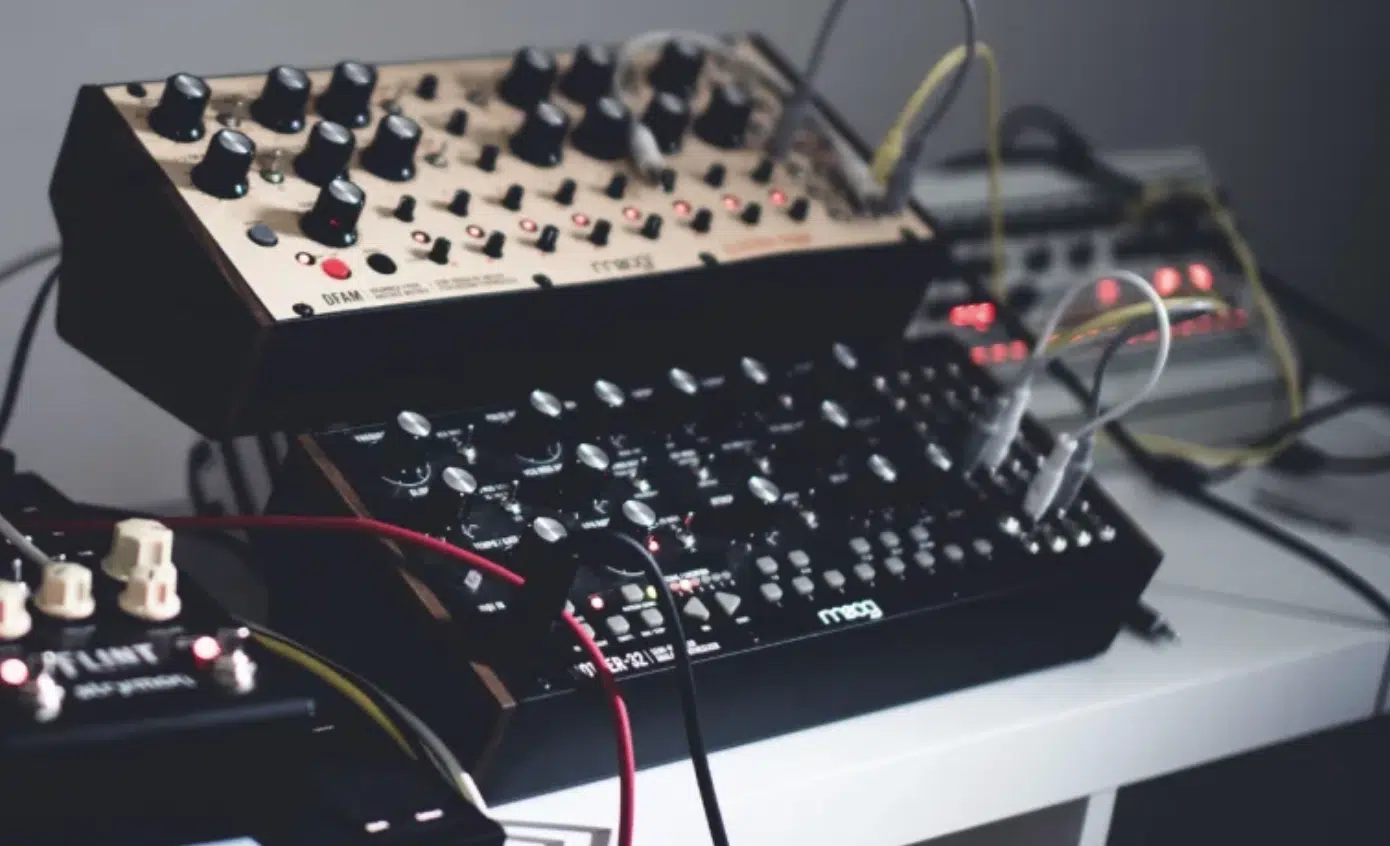
A semi-modular synthesizer offers an appealing middle ground for those interested in the limitless sonic palette of modular synthesizers but prefer a less intimidating starting point.
With their pre-patched, ready-to-play nature, semi-modular synths allow users to begin experimenting right out of the box.
This crowns them a way more accessible entry point to modular synthesis.
A key advantage of semi-modular synthesizers is their flexibility.
They can function as standalone instruments, with their own oscillators, filters, and envelopes pre-connected in a traditional subtractive synthesis structure.
But they also have patch points that allow you to override the internal wiring and define your own signal path (just like in a modular synth).
Furthermore, semi-modular synthesizers can be integrated into larger modular setups, which offers room from growth.
With its combination of simplicity and expandability, a semi-modular synthesizer has become an appealing choice whether it’s your first synthesizer or 100th.
-
Key Differences Between Modular Synths & Semi-Modular Synths
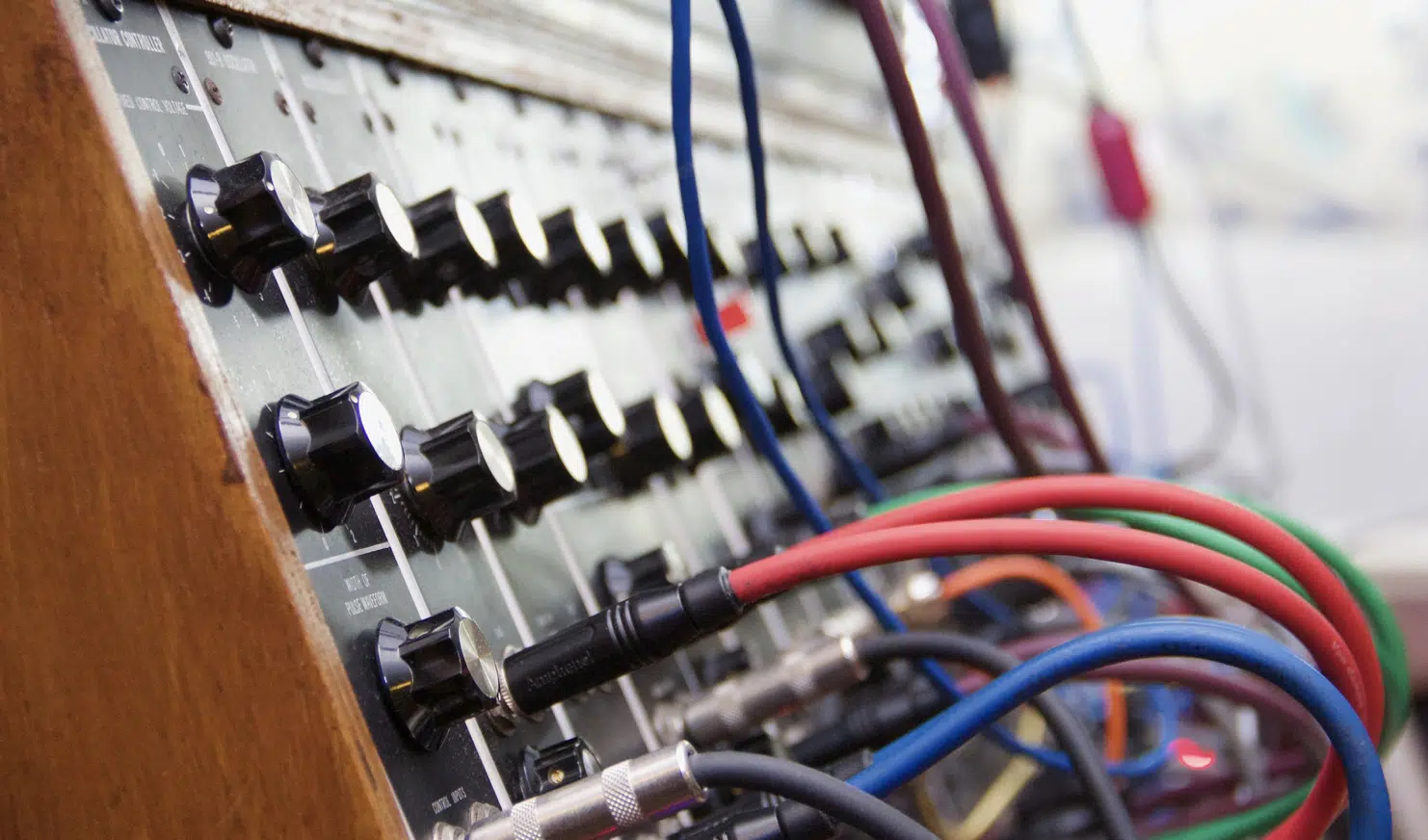
While modular and semi-modular synthesizers share some similarities, they also have key differences that cater to different types of genres, users and their unique needs.
#1. A modular synth is entirely customizable.
Every module of this complete system is separate, and there are no predefined connections.
This gives you maximum flexibility but also requires a deep understanding of synthesis to make any sound at all.
#2. A semi-modular synth comes with certain connections pre-wired.
This makes it easier to start making sounds, but you still have the option to reconfigure the signal path via patch cables.
#3. Modular synths typically have a larger learning curve and are more time-consuming to set up and use.
With a semi-modular synth, the learning curve is less steep, and you can start making sounds much quicker.
This can be especially useful in a live performance context, where quick setup and reliability are essential.
#4. Modular systems are typically more expensive.
Each module, the case, and the power supply all have to be purchased separately.
With a semi-modular synth, everything is included in one unit 一 making it a more cost-effective choice, especially for beginners.
NOTE: Despite these differences, it’s important to note that both modular and semi-modular synthesizers can create a wide array of sounds and are powerful tools for musical exploration.
The choice between the two often comes down to individual preferences and requirements.
-
Notable Semi-Modular Synths
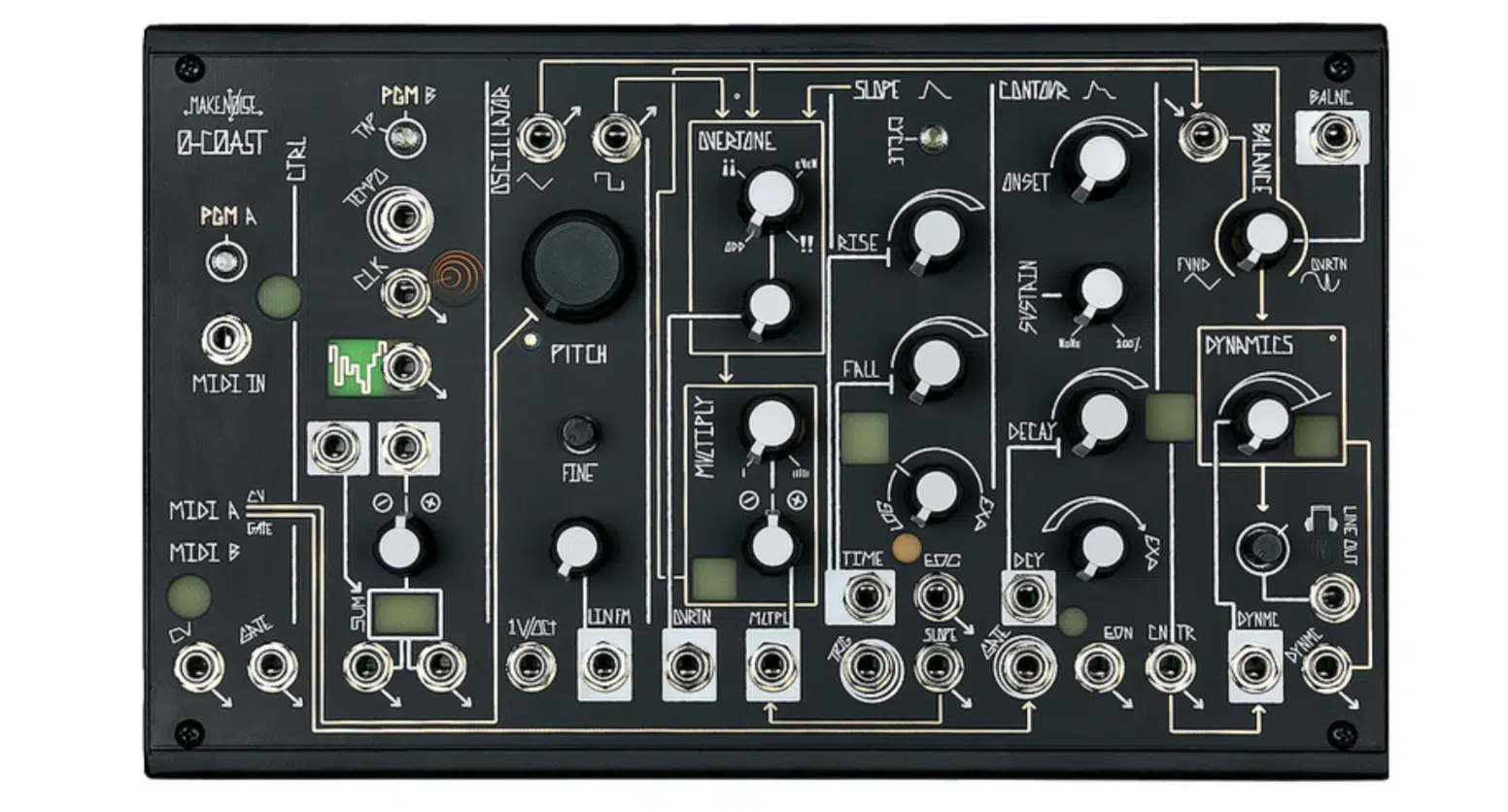
Several semi-modular synths stand out for their appeal to hip-hop producers, thanks to their rich sonic capabilities, ease of use, and overall value.
The Moog Mother-32, as we’ve touched upon earlier, is a highly regarded semi-modular synth that’s ideal for hip-hop production.
It is capable of delivering powerful basslines and punchy leads, as it contains:
- A classic Moog ladder filter
- Single oscillator
- 32-step sequencer
- 32 patch points
Plus, its semi-modular nature allows for extensive sound-shaping possibilities and compact size makes it a practical addition to any studio setup.
The Make Noise 0-Coast takes a different approach by blending elements of east and west coast synthesis philosophies into a single, semi-modular unit.
The 0-Coast is capable of creating a wide variety of sounds, from deep, growling basses to percussive blips and bloops.
The Behringer Neutron offers a lot of bang for the buck with its two oscillators, multi-mode filter, overdrive circuit, and extensive patchbay.
Its robust feature set and affordable price make it a popular choice for producers looking to dip their toes into the world of modular synthesis.
Each of these semi-modular synths brings something unique to the table, and offers new avenues for sonic exploration and beat creation.
Modular Synthesizer: Final Thoughts
There you have it, you now have all the information about modular synthesizers that you’ll need to create unique sonic masterpieces.
The sounds you create can become a reflection of your unique musical vision.
Remember, the boundaries of sound exploration and design with a digital modular synth are only limited by the reaches of your imagination.
To add a special touch to your sonic creation, consider these extraordinary, rhythm-defining free drum loops.
You can weave these high-quality loops into your modular systems, tweaking them in the most distinctive and compelling ways.
Therefore, you can further expand the horizons of your creativity.
Begin with these loops, alter them using the filter modules, add a dash of voltage-controlled enchantment, or even traverse through intricate patches in your digital modular setup.
In the universe of digital modular synthesis, these loops can serve as your invaluable sound design assets and offer a perfect resource for experimentation and growth.
As you tweak every knob and route each patch cable in your modular system, remember that you’re not just crafting sounds, you’re attempting to make a statement.
Until next time…







Leave a Reply
You must belogged in to post a comment.